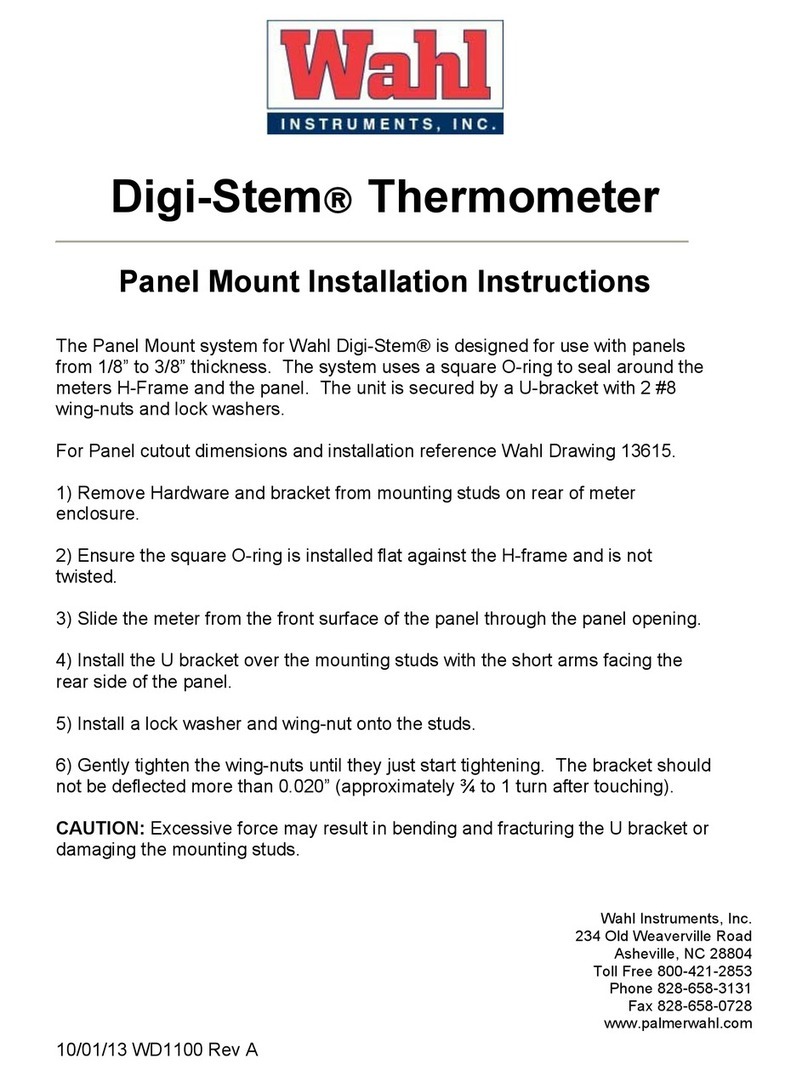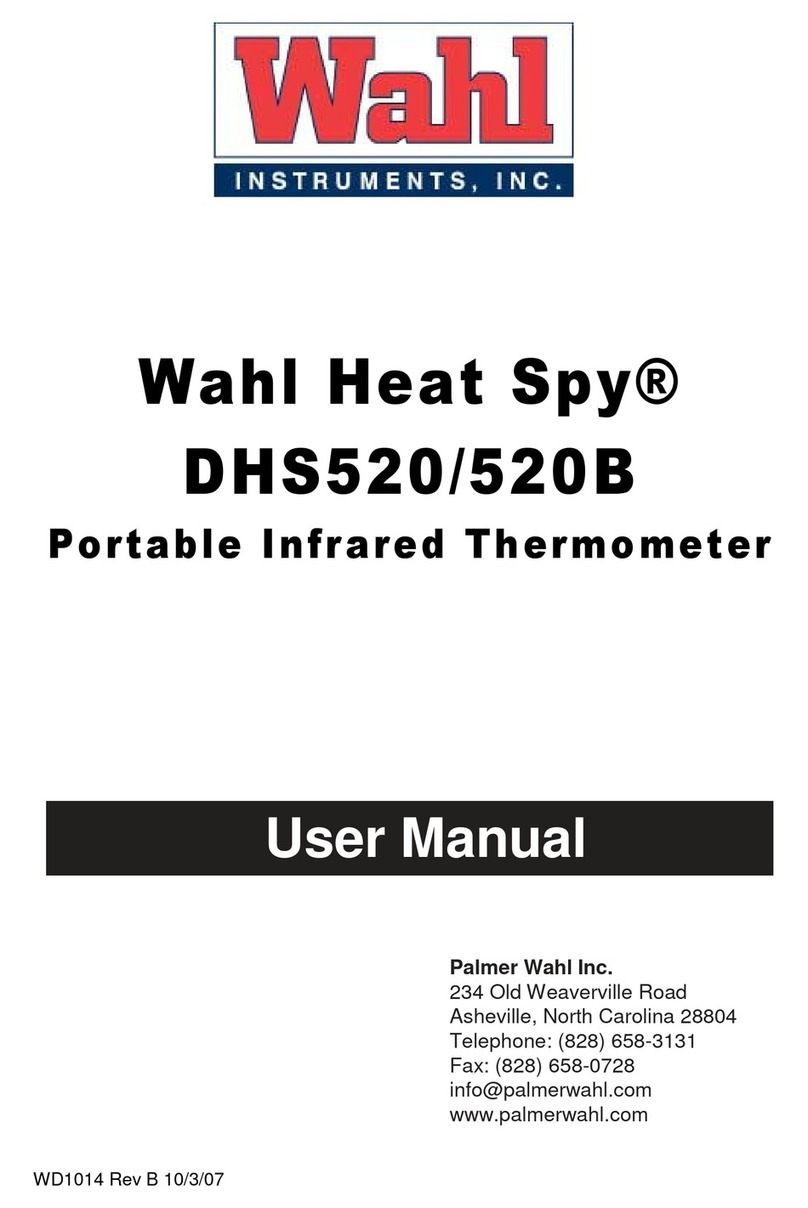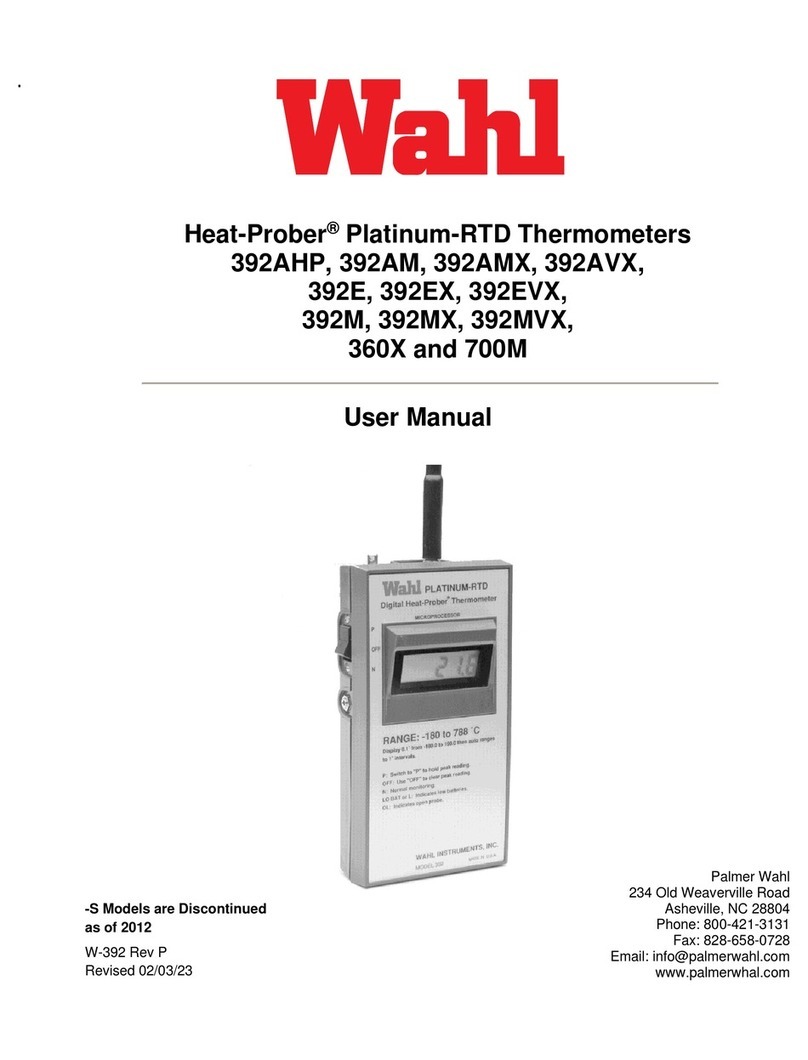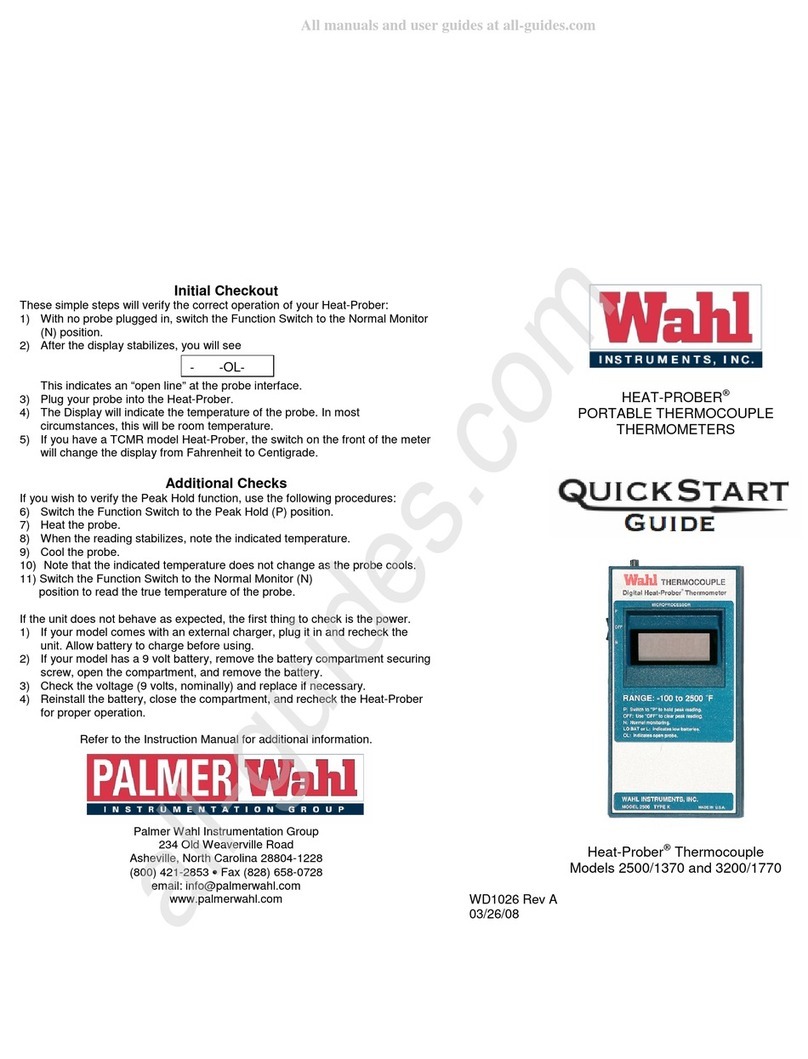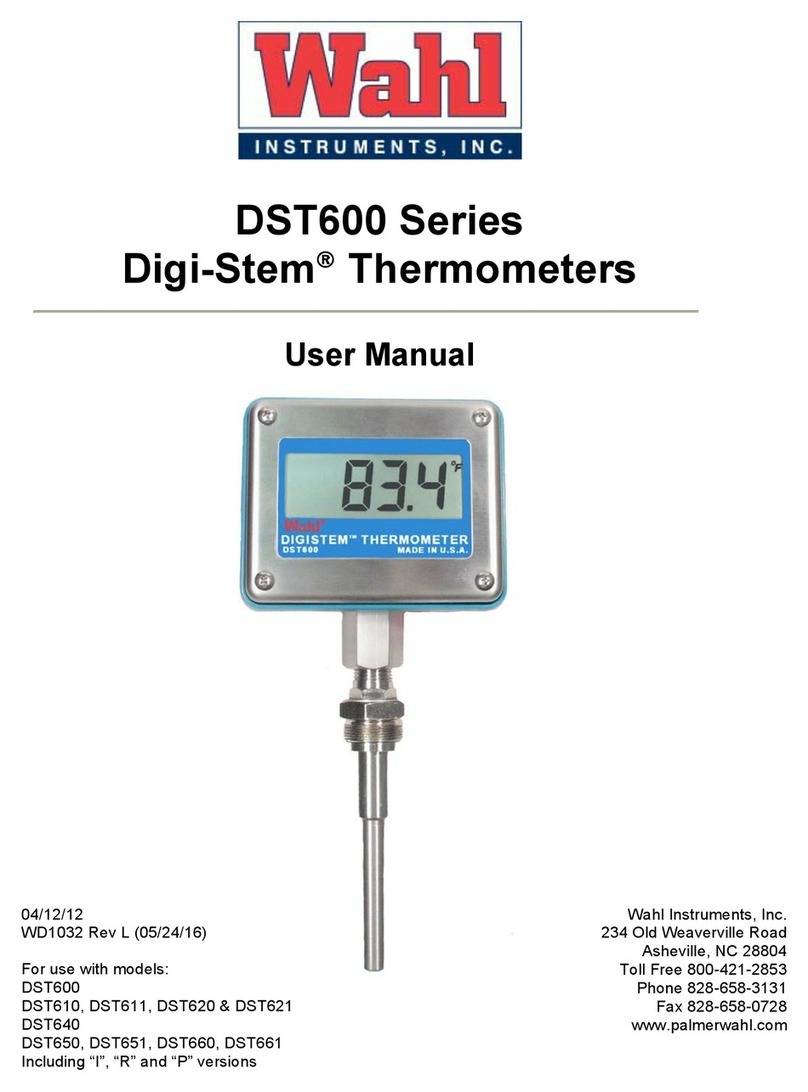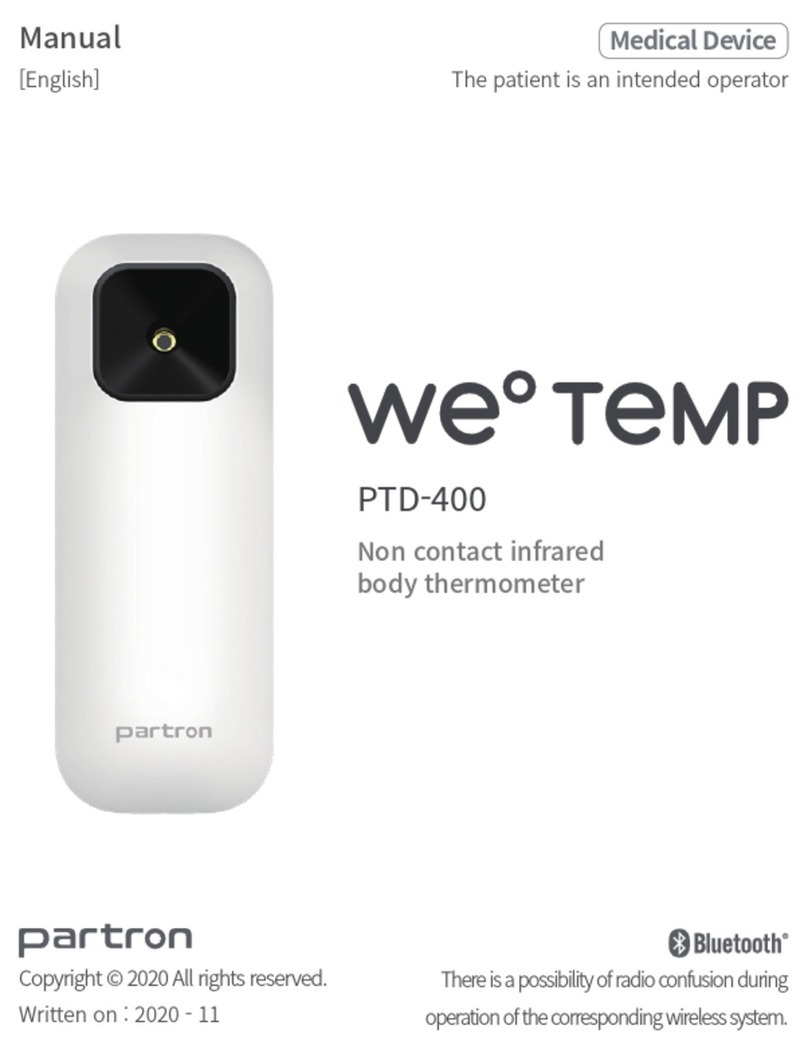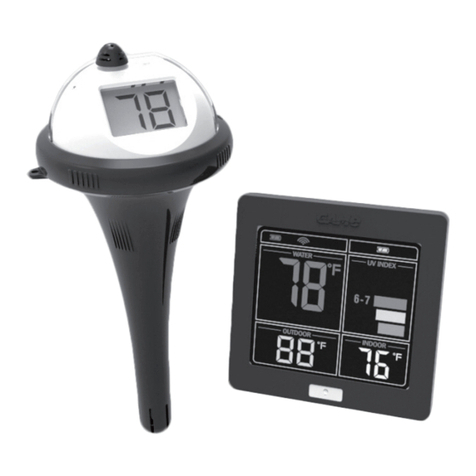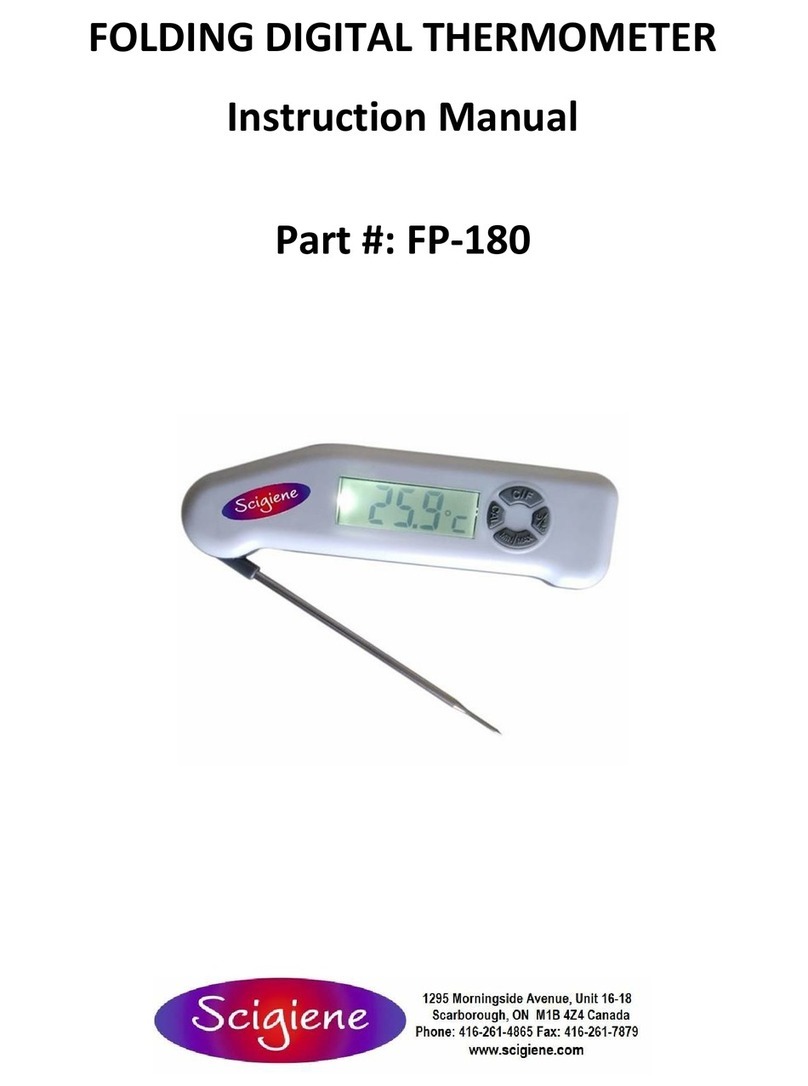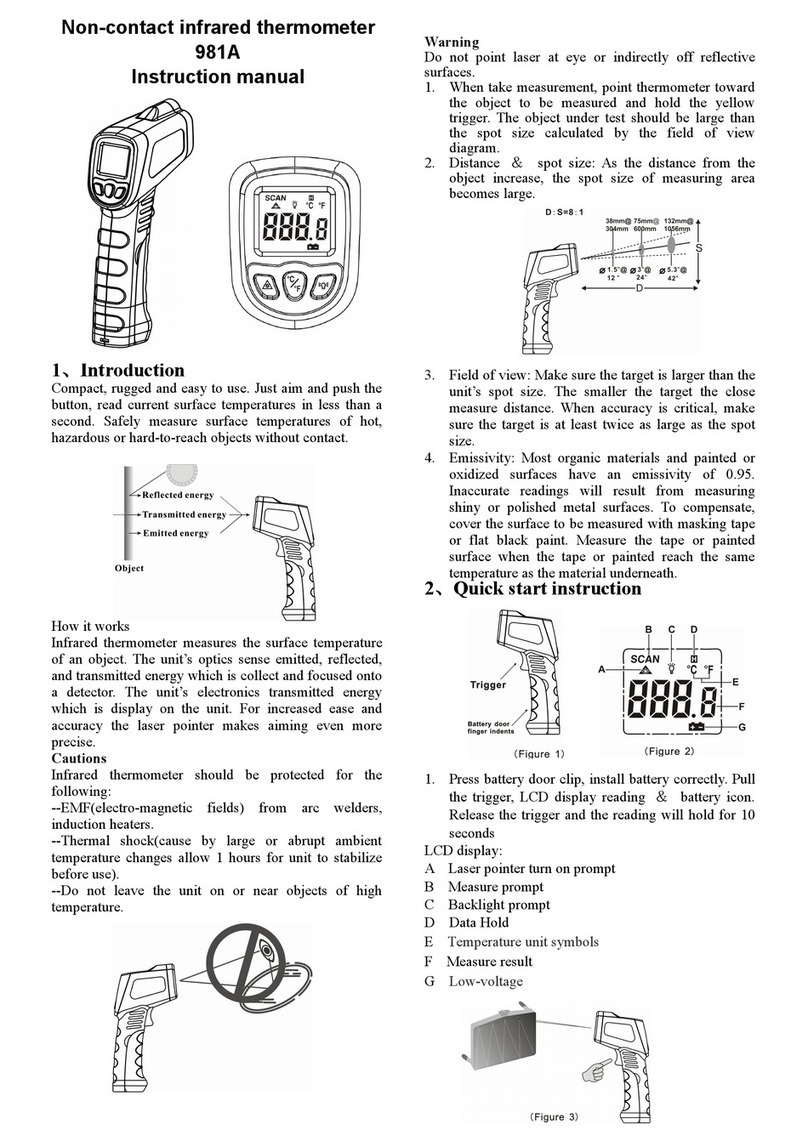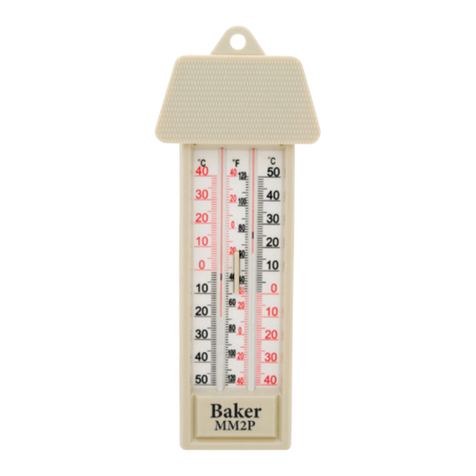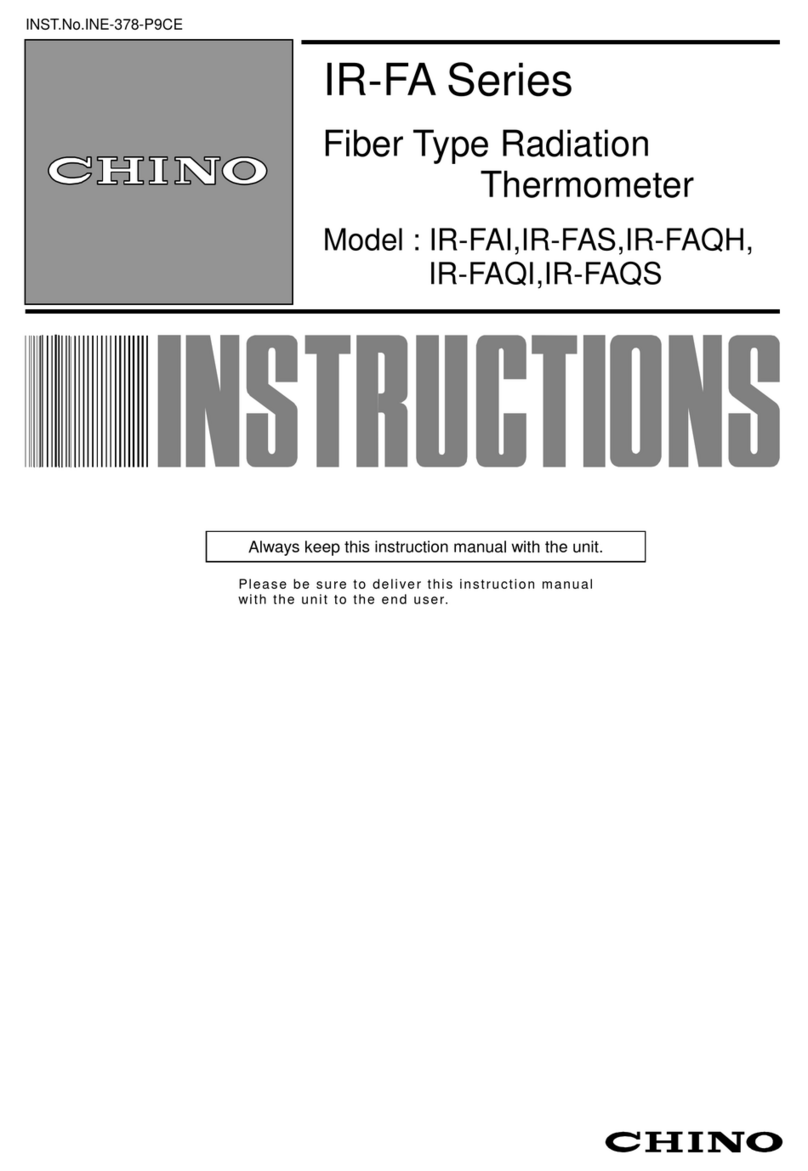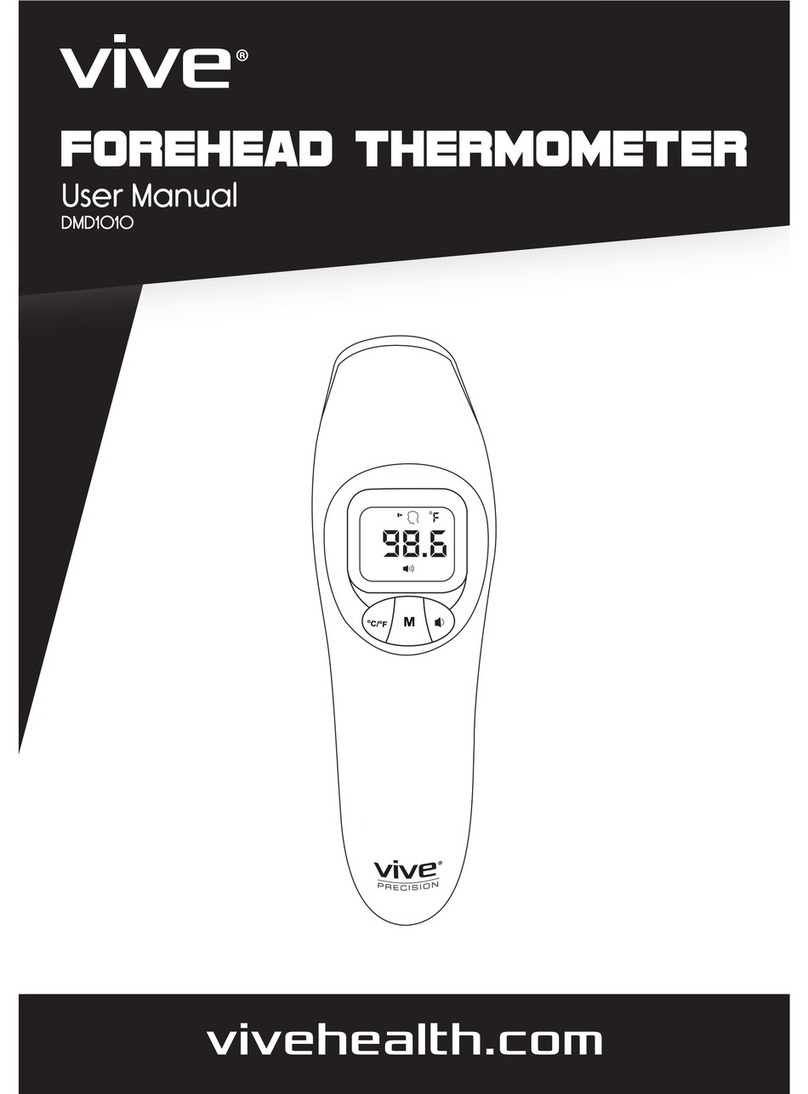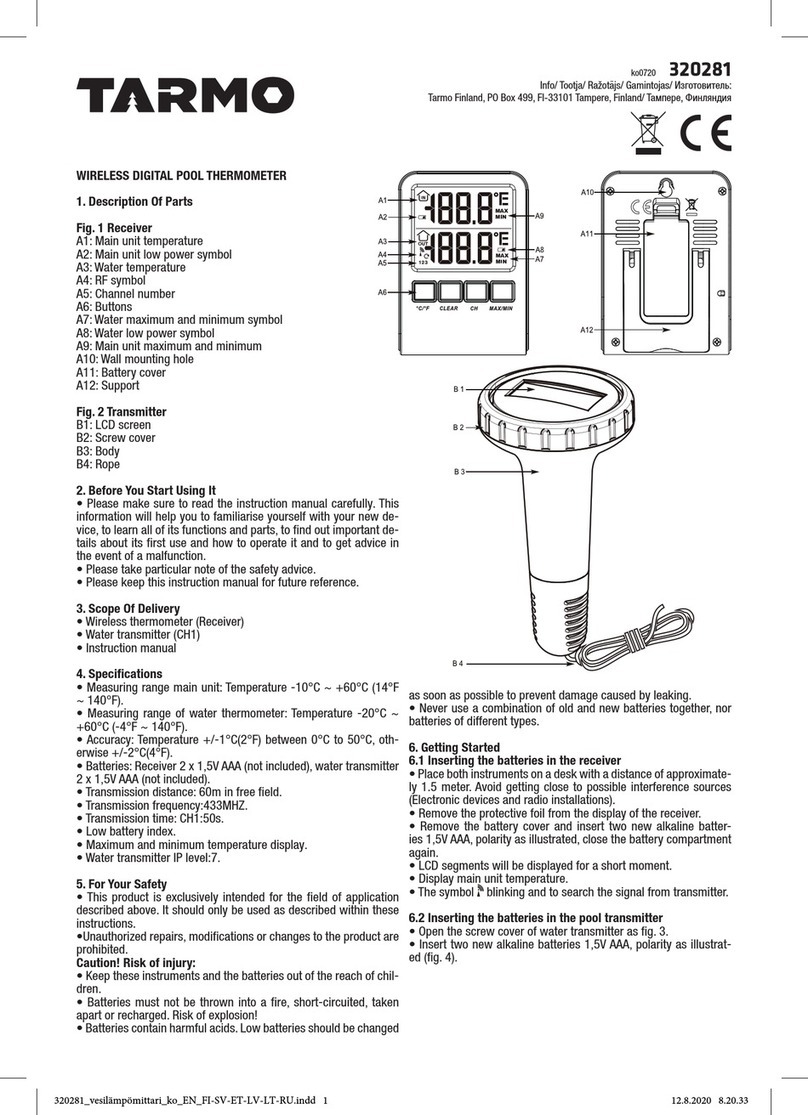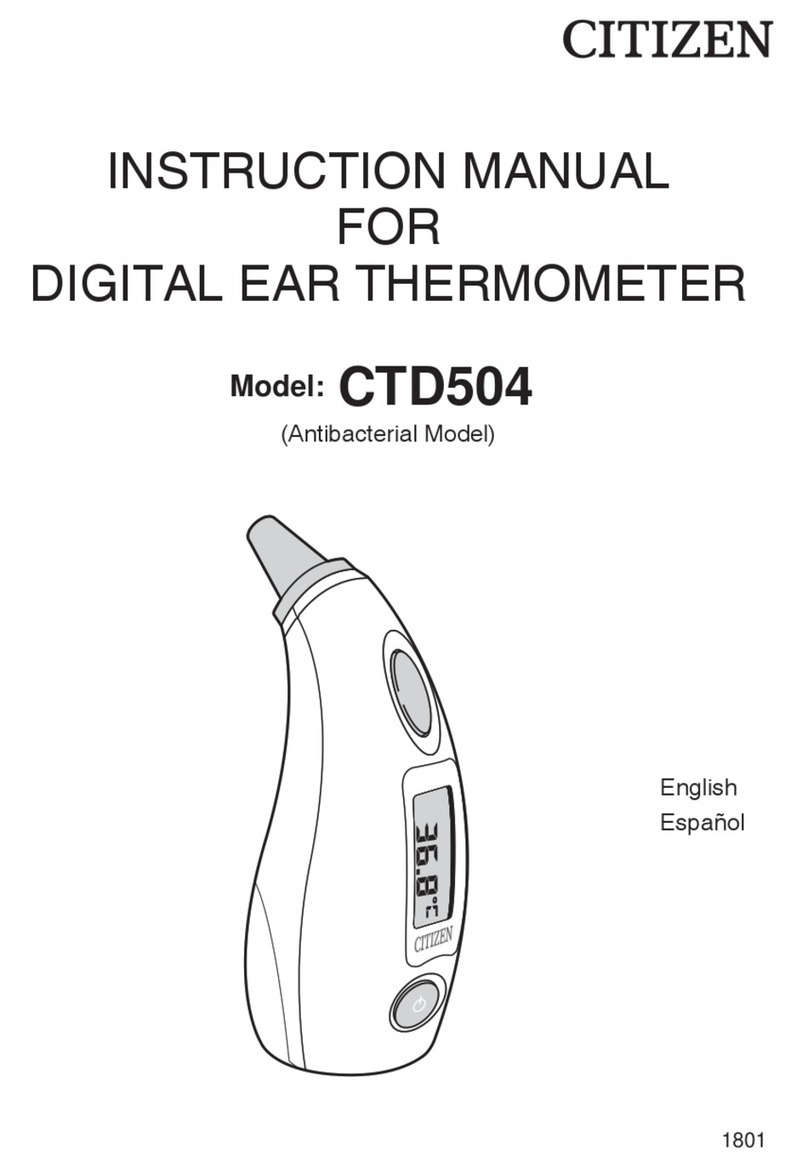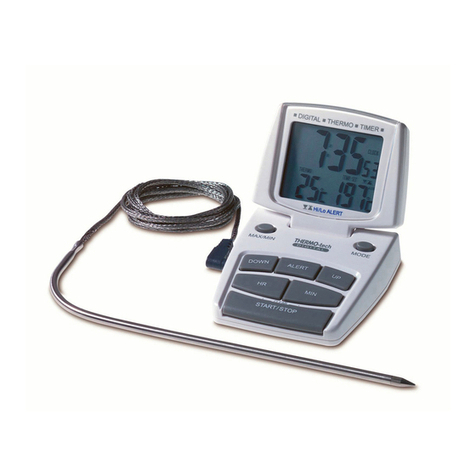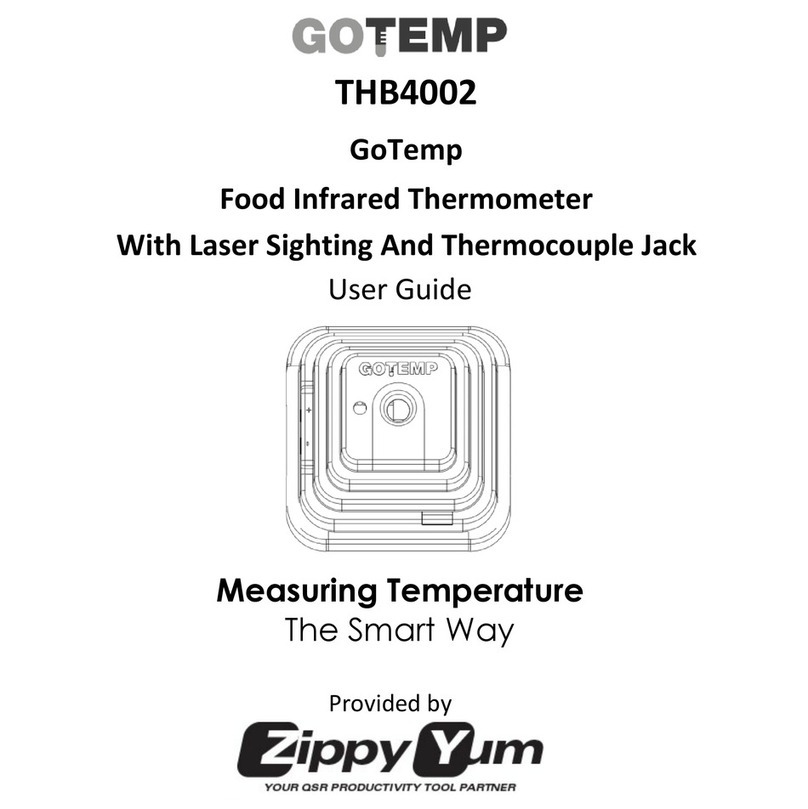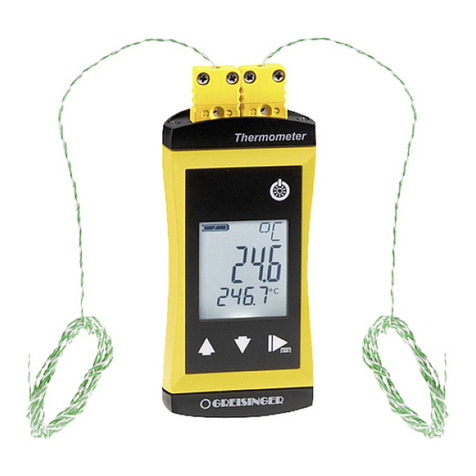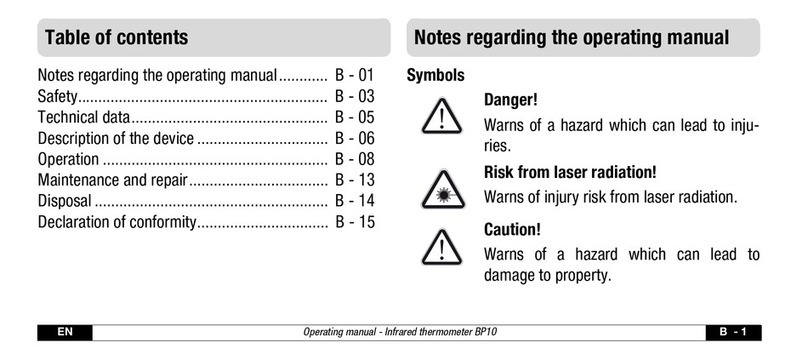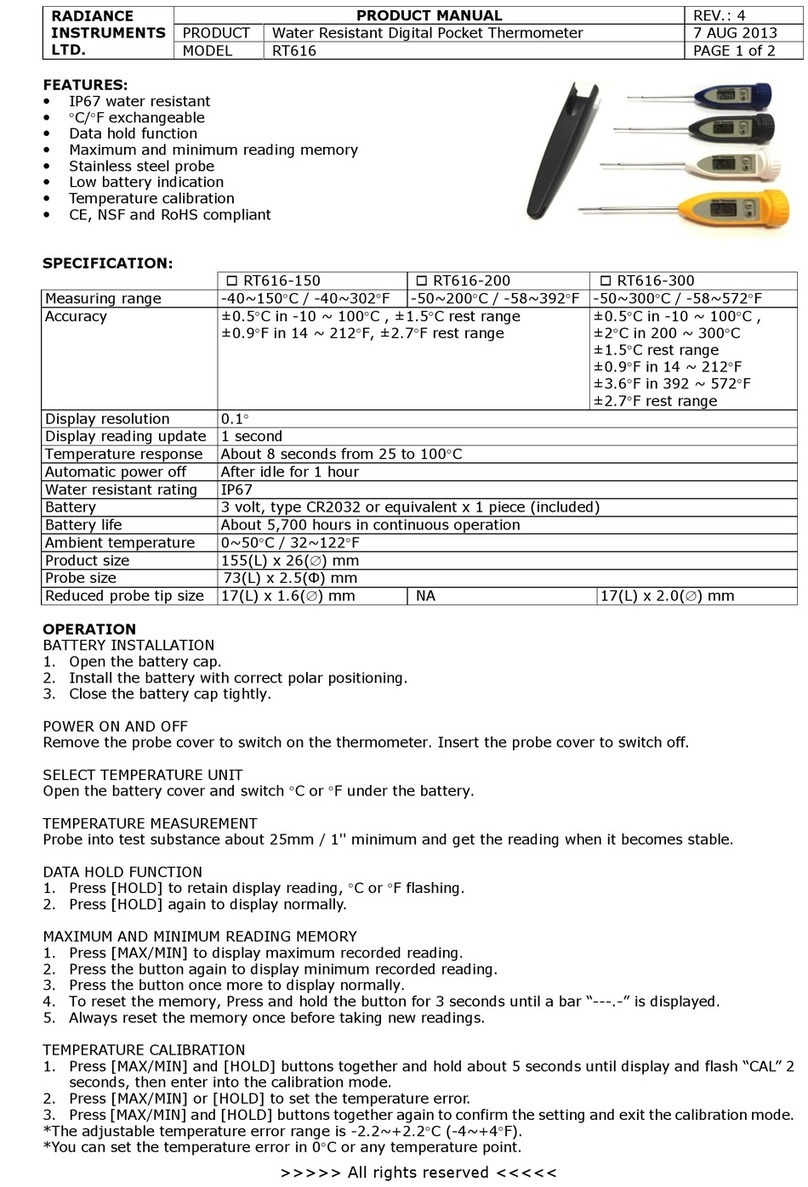
DST500-FM USER MANUAL
9 of 12
7 Calibration
As with all electronic RTD thermometers, there are two main components to the
system. The first component is the electronics, which measures the resistance of
the sensing element and then converts this resistance value to a temperature
indication. The second component is the probe, also referred to as the sensor.
The probes sensor resistance changes as its temperature changes. This change
is in conformance to the DIN EN 60751 Class A standard. As in all manufactured
goods, there are slight variations in the finished parts. A key variable of RTD
sensors is its resistance at 0°C, referred to as “RØ” value. Once this value is
measured, it may be programmed into the meter to correct the temperature
conversion algorithm. Programming and/or calibration require the use of the
DSTCAL software package. This package includes the USB cable, USB/DST
Interface Box and DST calibration cable. DSTCAL programming software
includes the ability to set the Sample Rate, RØ value and allows calibration of the
meter and/or calibration of the system (calibrates meter with probe’s R0 value).
The DST500-FM uses the following methods for calibration. For details of the
calibration, see the DSTCAL software manual, Wahl P/N W1037.
7.1 Ohm Meter calibration – Ohm Meter calibration is a 2-point calibration,
which calibrates the DST500-FM electronics. It requires a NIST traceable
precision resistance source with a known accuracy of ±0.03 ohms at 50.00
and 280.00 ohms. Resistors used should have a temperature coefficient of
<5.0-ppm.
7.2 Probe (system) calibration - Probe calibration is a single point calibration
which is performed by placing the probe into an ice bath and following the
on screen prompts of the DSTCAL software. The DST500-FM and
software will measure the probes RØ value and program it into the
DST500-FM’s memory. The system is then calibrated. After system
calibration is completed, the calibration should be checked at the
temperatures of interest to the end user, using calibrated accurate
standards and calibration baths.
7.2.1 DST500-FM calibration adjustment - Calibration is accomplished via the
DSTCAL software package and associated hardware interface. Method 1
may also be performed with the DSTPROG software. Optional cable
extensions are available for convenience in calibrating fixed probes.
7.2.2 The two methods of calibrating a meter with probe as a system are:
7.2.3 Method 1
The first method uses an ice bath and high accuracy ohmmeter
along with the DSTCAL software.
For fixed probes:
1) Disconnect the probe from the meter and place the probe in an
ice bath or 0°C circulating bath. Allow stabilization.

